Progress Report
July 25th, 2005
Overview
- Number of model instances and sensitivity
- Number of modes used in evaluation (and sensitivity)
- Knot-points and bending energy
- Data-driven segmentation propagation
Modes in Specificity and Generalisation
- We aim to discover the number of syntheses which ought to be used in evaluation
- The arbitrary choice of (number of) modes begs a solution as well
- The graphs (shown in the subsequent slides) reflect on the selection of number of modes
- They also reflect on the number of synthetic images
Generalisation - Perturbed Set
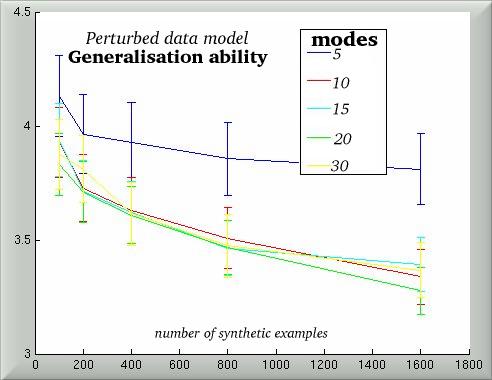
Generalisation of a model built from perturbed images. Values are shown for a different number of modes, as function of the number of model examples.
Generalisation - Registered Set
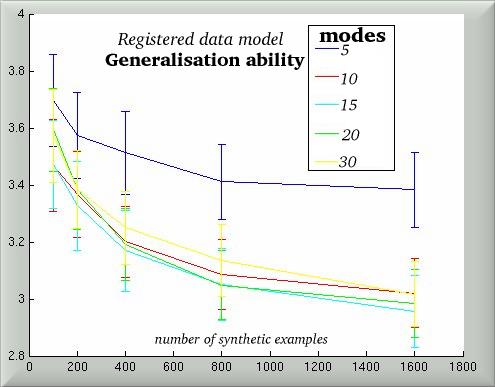
Generalisation of a model built from registered images. Values are shown for a different number of modes, as function of the number of model examples.
Specificity - Perturnbed Set
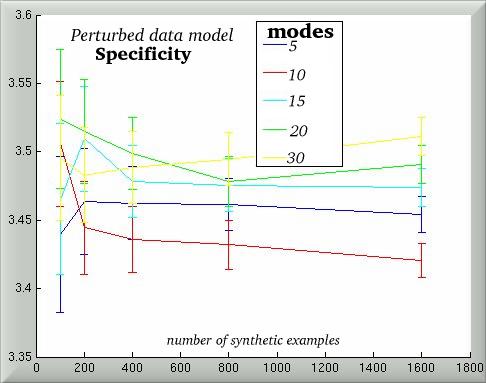
Specificity of a model built from perturbed images. Values are shown for a different number of modes, as function of the number of model examples.
Specificity - Registered Set
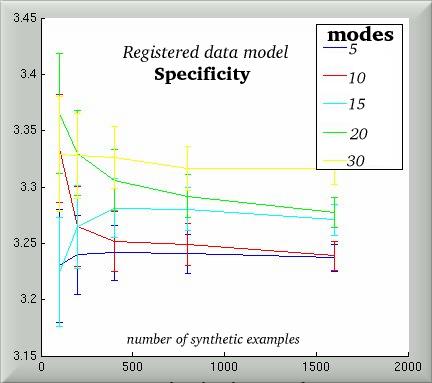
Specificity of a model built from registered images. Values are shown for a different number of modes, as function of the number of model examples.
Sensitivity and Syntheses
- The following graph is not a very useful one
- Generated by mistake
- Computing the sensitivity to increases/decreases in the number of model syntheses
- Gives insight into the stability of evaluation as the number of synthetic images increases
Sensitivity and Syntheses - Graph #1
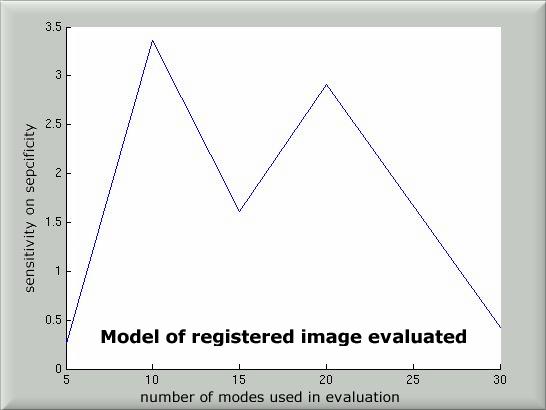
Sensitivity to change in number of model syntheses. Sensitivity is calculated over Specificity of a registered set model.
Sensitivity and Syntheses - Graph #2
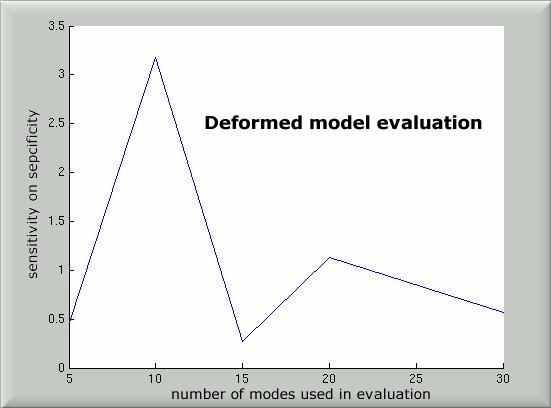
Sensitivity to change in number of model syntheses. Sensitivity is calculated over Specificity of a model of mis-registered images.
Sensitivity and Syntheses - Observations
- There is no agreement among the 2 evaluations
- For more continuous curves, one needs
- more models
- more evaluations (with a varying number of modes)
- multiple instantiations (perturbed image sets which make up models)
Number of Modes and Sensitivity
- Looking at 1,600 instances from the model
- The derivation agrees with our previous formulation of sensitivity
- The formulation: Difference between specificity values (registered, unregistered)...
- ...divided by the mean of the errors on Specificity
Number of Modes and Sensitivity - Results
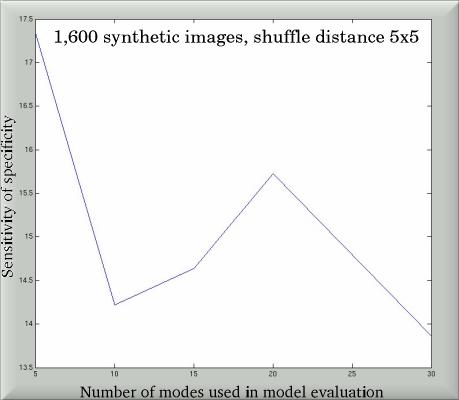
Specificity sensitivity in models is shown for different number of modes. Limited number of modes is of course used in an evaluation which is finite.
Bending Energy - Graph
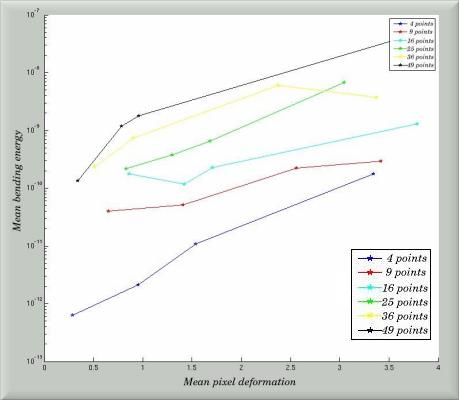
The effect of the number of knot-points on bending energy in images
Bending Energy and Number of Knot-Points
- The figure demonstates that bending energy behaves as we would expect
- Note: Y is scaled logarithmically
- "Points" refer to the number of knot-points, which are distributed at random
- For a number of points, say n2, the number of point becomes (n+1)2 in the subsequent stage
Label Propagation and Strong Edges
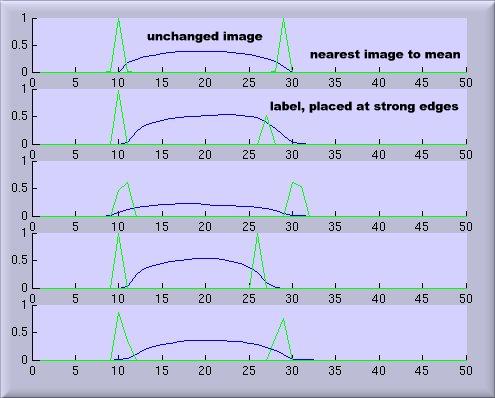
Selection of knot-points with placement on strong edges. Propagation of labels is shown after 5 warps were applied to each image.
Label Propagation and Strong Edges - Ctd.
- The method involves
- Selecting points in n strong edges
- Building model using NRR
- Propagating labels from one (immutable) image to all others
- Performance is somewhat satisfying at the start
Summary/Conclusions
- Progress can be broken down into three parts:
- A reasonable choice of number of modes, which are to be in evaluation, leads to better sensitivity
- Bending energy increases significantly when the number of knot-point does
- Segmention and label propagation, driven by strong edges
Present and Future
- Impending results from a 2-D registration of IBIM images and labels
- Comprehensive model evaluation experiments
- Decision on various parameters, e.g. number of modes, number of instantiations for better statistics
- Further experiments on segmentation in the interim